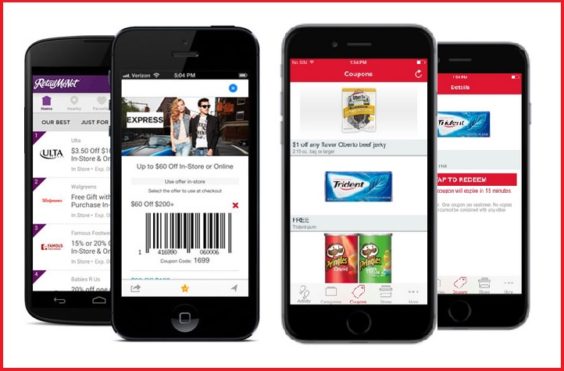
When it comes to saving money at the grocery store, we’re still looking to newspaper inserts for the majority of our coupons. But when it comes to saving money at other retailers – we’re increasingly finding better deals by putting down the scissors and picking up our phones.
Two new studies show that mobile coupon use at clothing, convenience, general merchandise and other retail stores is far outpacing their adoption in the grocery store.
In “The State of Coupons and the Role of Mobile,” the coupon code site RetailMeNot and location-based analytics provider Placed find that “mobile apps have become the primary source for deal seeking.” 43% of shoppers surveyed said they get non-grocery coupons via mobile, compared to 36% who look for paper coupons.
“Shoppers no longer need to devote time to clipping coupons from the newspaper,” the report found. “They now have a device that can help them find deals instantaneously.”
While the majority of survey respondents plan ahead and gather their coupons before they shop, 15% said they search for coupons while they’re in the store. Unless you shop with a Sunday newspaper tucked under your arm, that kind of last-minute deal-searching is really only possible with a mobile device.
“Mobile has made coupons an on-demand activity,” RetailMeNot’s North American Chief Marketing Officer Marissa Tarleton said in a statement. “Retailers who embrace this change in consumer behavior to deliver offers at all stages of the planning process are poised to capture sales in the moment.”
Just think about retailers who currently blanket the world with paper coupons. If you want a Macy’s coupon, you’re sure to find one in your Sunday newspaper. For a Bed Bath & Beyond coupon, you’ll probably find one in your mailbox. Need a Kohl’s coupon? They’re everywhere.
But maybe not for long. Because these days, they’re all just as easily accessible online. You no longer have to wait by your mailbox for a Kohl’s coupon, or wait until Sunday to clip a Macy’s coupon out of a sales circular. You can just pull out your phone, at home or at the checkout, and there they are.
Not only is that convenient for shoppers, but potentially profitable for the retailers. Another new report, by mobile coupon platform Koupon Media, found that shoppers “spend more money, buy more products and adopt new technologies when they’re given a mobile coupon.”
In its 2016 State of the Mobile Coupon Industry report, Koupon Media found that 42% of mobile phone users have used a mobile coupon, and 39% end up spending more when they do.
“The fact is mobile coupons are easier to use than paper or print-at-home coupons and more retailers accept them than ever before,” Koupon Media CEO Bill Ogle said. “It won’t be long before the mobile coupon outpaces paper coupons altogether.”
That may be true for general-merchandise retailers, but not in the grocery store. While retailers typically issue just a small selection of percent-off or dollars-off-your-total-purchase coupons, grocery store coupons are much more item-specific. If you try to use your phone to search for a digital coupon for each and every item you put into your shopping cart, you could be there for a while. Paperless grocery coupons are becoming more popular, but according to Inmar’s latest Promotion Industry Analysis, they still make up just 1% of all grocery coupons available. Newspaper insert coupons account for 89%.
So for those who predict the imminent demise of paper coupons – they may be half right. To save money at most retailers these days, all you need is your phone. But to save the most money at the grocery store – don’t get rid of your scissors, just yet.











Solid reporting here for the linkage if nothing else (3 different reports!) and professionally free of snark.
So let me step in here and add a little salt to the steak:
“Shoppers no longer need to devote time to clipping coupons from the newspaper” (RetailMeNot)
“It won’t be long before the mobile coupon outpaces paper coupons altogether.” (Bill Ogle, Koupon Media CEO)
Your (ostensible) industry thought leaders here, gang. Captains of industry whose utterances actually betray them and convey how little they understand of the space. Settlement mechanics, clearing, CPG strategy for coupon distribution. You know, “marketing”